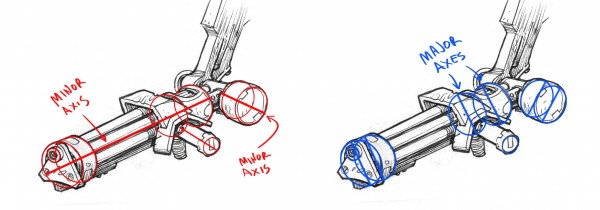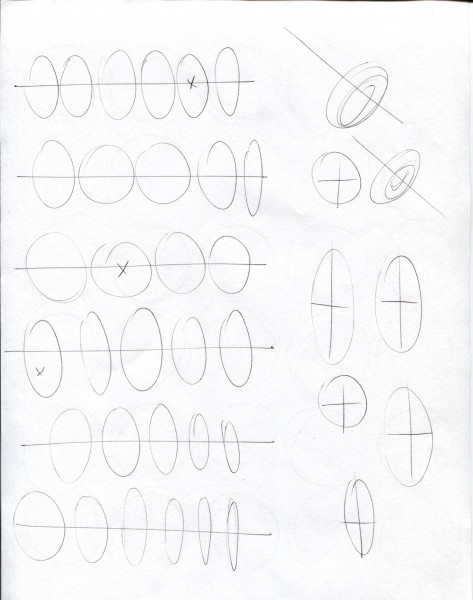The One Rule to Drawing Ellipses
There are a lot of harrowing challenges to take on as an artist: learning human anatomy, figuring out perspective, drawing hands, ect. But of all of the epic quests of artdom, none deserves more respect than learning how to correctly draw an ellipse. It is a task that can stop the otherwise enthusiastic art student in his tracks, when suddenly faced with the challenge of *gasp* drawing a car.
Maybe you've faced this challenge yourself. Your wheels look squishy, your canisters look askew and your arches look like something out of the Cabinet of Dr. Caligari.
While practicing drawing ellipses in your daily warm-up will help, you need to know one thing about drawing ellipses in perspective to get things right.
This is it:
The Minor Axis of an ellipse always recedes to the vanishing point.
Wait, what is a Major and Minor Axis?
This is how it works in perspective:
This is why ellipse templates have markings indicating the major and minor axes. Using a template is a great way to visualize and understand this concept.
Another way to think of this rule is that when you draw a cylinder, the minor axis will always be parallel to the sides of the cylinder and the major axis will be perpendicular to the minor axis.
Don't let perspective mess you up. The major and minor axes will always divide the ellipse equally in half on the 2D plane.
How to Practice this
First draw a straight lines. These will be your Minor axes. then draw centered ellipses over the top of them. Focus on trying to cut the ellipse in half as you draw it on top of the the line.
You can also practice drawing ellipses and then cutting them in half with the major and minor axes.





